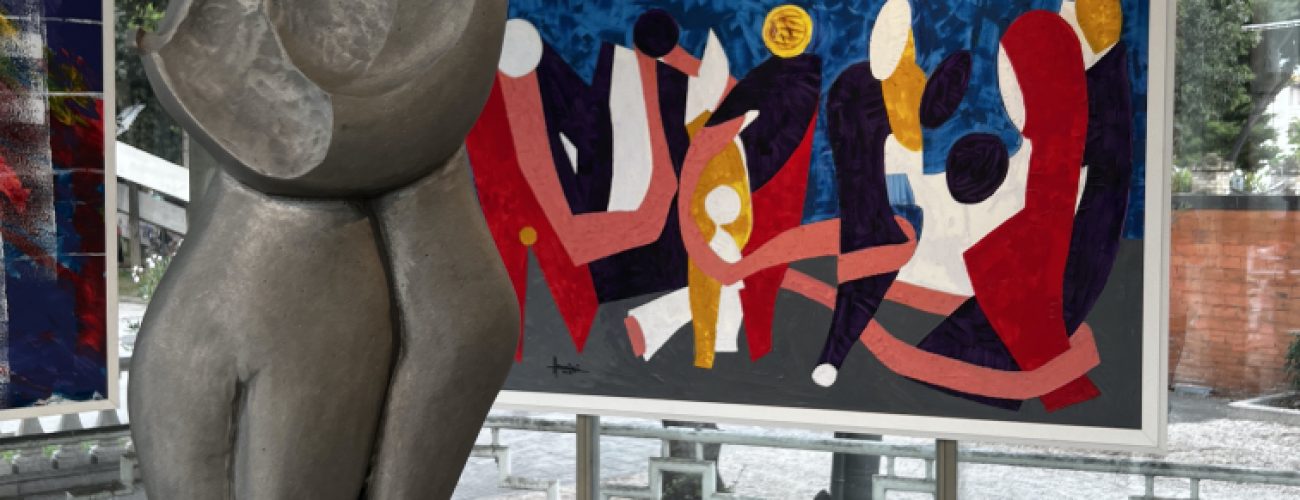Tonino Maurizi and “The Seduction of Forms.”

In Civitanova Marche the artist's works, between harmony and innovation
Tonino Maurizi returns and exhibits in his Civitanova Marche with a solo exhibition “The Seduction of Forms,” dedicated mainly to the sculptures that have accompanied his brilliant career as an artist.
The premises of the Palazzina Liberty at Lido Cluana host a long and varied itinerary, skillfully put on display by the curator of the event, as well as Tonino’s daughter, Francesca Maurizi supported by critic Alvaro Valentini, who dedicated the following words to the exhibition:
“Sixty-six years after his first exhibition of sculptures, held in 1956 at “Il sestante” Gallery in Milan, the well-known artist from the Marche region with an atelier in Montecosaro Scalo, presents his creations, elaborated with a completely original style that evokes the research and skillful craftsmanship of the Renaissance masters.
Sensitive, intuitive, inventive, Tonino Maurizi tends to be ahead of his time, formulating an exclusive verb in continuous progress that transitions from the neoclassical tradition into an evocative and symbolic dimension according to canons of formal and plastic harmony, in perfect balance between rational vision and ideal abstraction.
A “genius loci” who makes a virtue of reserve and of restlessness an expressive medium of vivid astonishment.
Maurizi moves with lively spontaneity and limpid freshness in the lap of this riverbed, indebted to the lesson of Renzo Ghiozzi, aka Zoren, who spurred him to give free rein to his talent, and in particular to the fascination aroused in him by the whimsical and creative personality of Ivo Pannaggi, later elected as his Master, through the fabulous stories of Nino Ricci, his teacher.
Tonino Maurizi came from a boiling postwar world and from a generation of authentic talents: his fellow students and adventurers were three-time Academy Award winner Dante Ferretti, sculptors Valeriano Trubbiani and Francesco Bonanotte, painters Danilo Bergamo, Silvio Craia, Guido and Carlo Bruzzesi, and artist-publisher Giorgio Cegna, all young people animated by an extraordinary vital impetus and the spirit of artistic innovation.
From its beginnings, Maurizi’s research has developed in an intimate relationship with matter.
He uses various materials in his work but prefers wood for the admirable luministic effects with the ambient space, for the warmth-color of the treated surfaces, and for the multiplicity of solutions offered.
The metamorphosis of matter in Maurizi is developed with a twofold purpose: on the one hand, that of furnishing rooms and spaces, as attested to by furniture and composite structures; on the other, the more properly artistic one, aimed at indulging the creative impulse, although the two forms, connected and dialoguing with each other, are sustained by a single ideal tension, that of harmony and beauty, basic values these that descend from an aesthetic and ethical vision of making authentic art in all its various expressions.
This way of operating enabled him to modernize the family business, which had been operating since 1930, transforming it over the course of the years into a qualified and competitive nationwide furniture design and manufacturing firm (Maurizi Furniture, precisely) where he could bring to bear his brilliant insights as interior designer, painter, decorator, sculptor, cabinetmaker, and set designer of spaces and environments.
In other words, an imaginative, visionary, imaginative craftsman-artist, capable of influencing beauty, harmony and style into a single project/work of shining revelation.
Analyzing Tonino Maurizi’s human and artistic iteration reveals how he has always returned to his steps, not so much to repeat them as to trace new paths alongside them, first experimenting with adventures beyond all limits, then returning to his dearest affections and native roots, which were far more important to him than any success.
Finally, embarking on a new journey of investigation and creativity that to this day cannot be said to be concluded, so much so is his passion, his freshness of ideas and projects, his (and our) amazement at the countless works he has created, indulging an impulse of genuine, poetic germination.
On these aesthetic lines falls the Civitanova Marche…exhibition, which presents some forty sculptures of small and large format (and four paintings), from the figurative real to the symbolic and evocative abstract, all works traced back to the full sense of beauty, harmony and innovation.
For Tonino Maurizi it is a matter of pure joy and delight to unveil in the city where he lives with his family the results of his long and fruitful work of research and limpid creativity.”